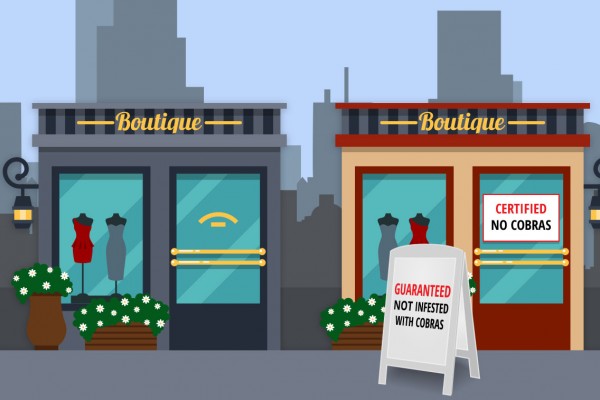

It’s a question our clients are asking more and more, thanks to more and more buzz across the web. Much like English is the international language, HTTP and HTTPS are the international languages of the world wide web. Most websites are built with HTTP (Hyper Text Transfer Protocol). Think of it like an ATM without a password. You can get in and see whatever you want, read through any page you want to, even take anything you want, with nothing to stop you. No big deal right? Until you start collecting sensitive information like credit cards, passwords or personal data.
That’s where HTTPS (HyperText Transfer Protocol Secure) comes in, with another layer of encryption that prevents unwanted viewing and data theft. That encryption uses yet another protocol called SSL/TSL (Secure Sockets Layer and Transport Layer Security). You can spot an HTTPSconnection by the green lock symbol that appears next to the URL in your browser bar. HTTPS has been around for a while – some say since the mid-90s – but the recent trend toward more secure site viewing has put the spotlight on it.
Google is driving it (of course), and if visitors are using Chrome (owned by Google) or Firefox to view your website, they’ll see a warning about viewing a webpage that isn’t secure. Google started flashing the alerts in January of this year, and it’s catching on. Not all sites are experiencing this yet, but they could by the end of the year if they don’t have an SSL in place. You’ll definitely see a benefit to going SSL, as it ensures your site is secure in the areas of ownership, content and transactions (if applicable).
The effort was supposed to initially target sites that require visitors to submit sensitive or personal information but has now spread to all websites. The momentum actually started back in 2014 when Google made https sites a signal that could raise your search engine ranking. But it really didn’t gain traction until this year when Google began putting warnings out when visitors tap the URL.
Not surprisingly, shopping, healthcare and finance rank in the top 10 of industries with the highest HTTPS usage. And there’s no doubt having that extra SSL impacts your ranking – half of the first and second position sites in a random sampling of 100,000 keyword results were HTTPS.

The good news: It’s not terribly complicated for us to put the SSL in place. We handle it all behind the scenes. When applied, it covers your entire website as well as future pages and content you add. You won’t notice an impact on page load times or server resources, and visitors may actually notice that your site moves faster, thanks to ramped up browser speed only available when you activate HTTPS.
